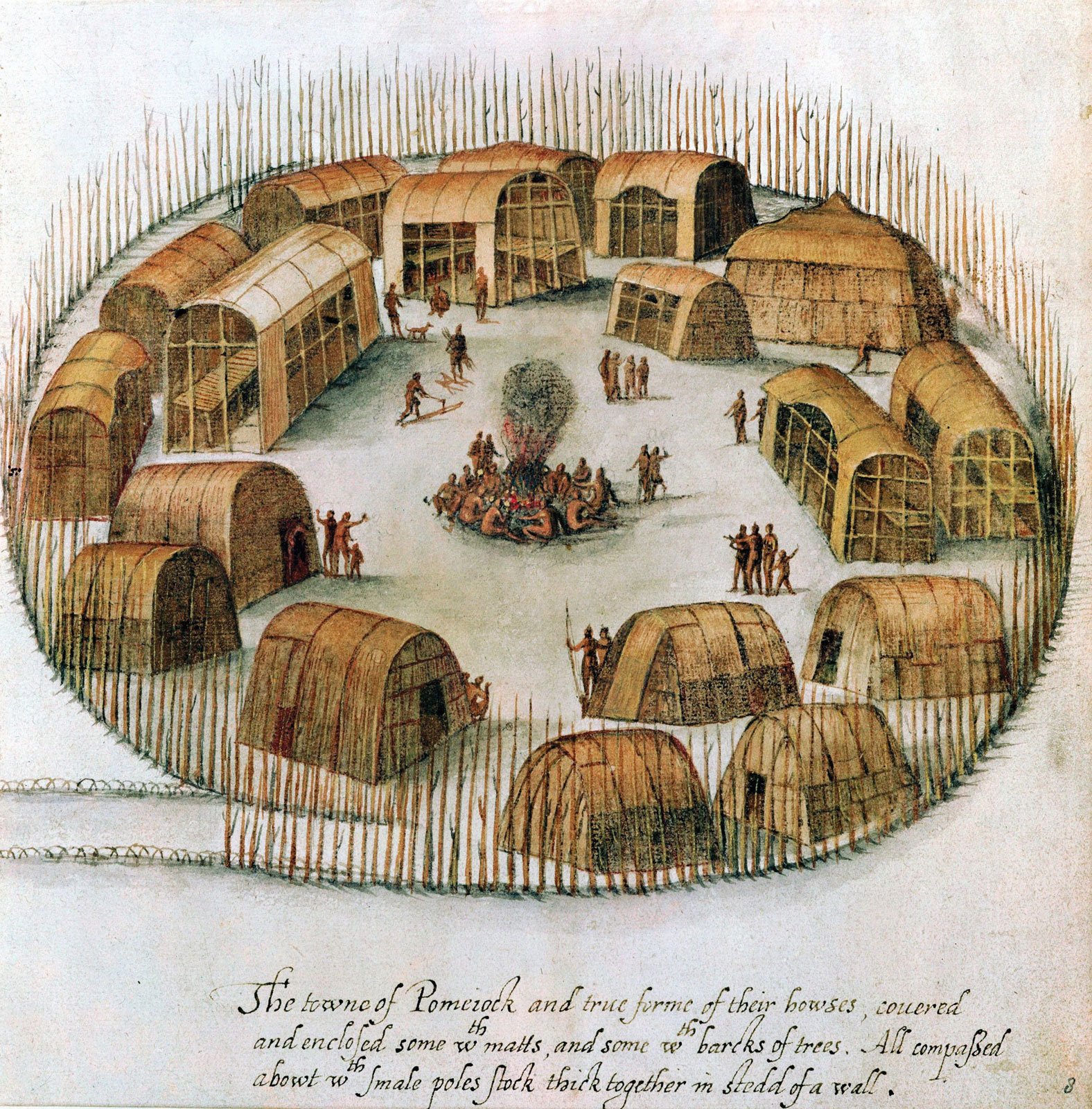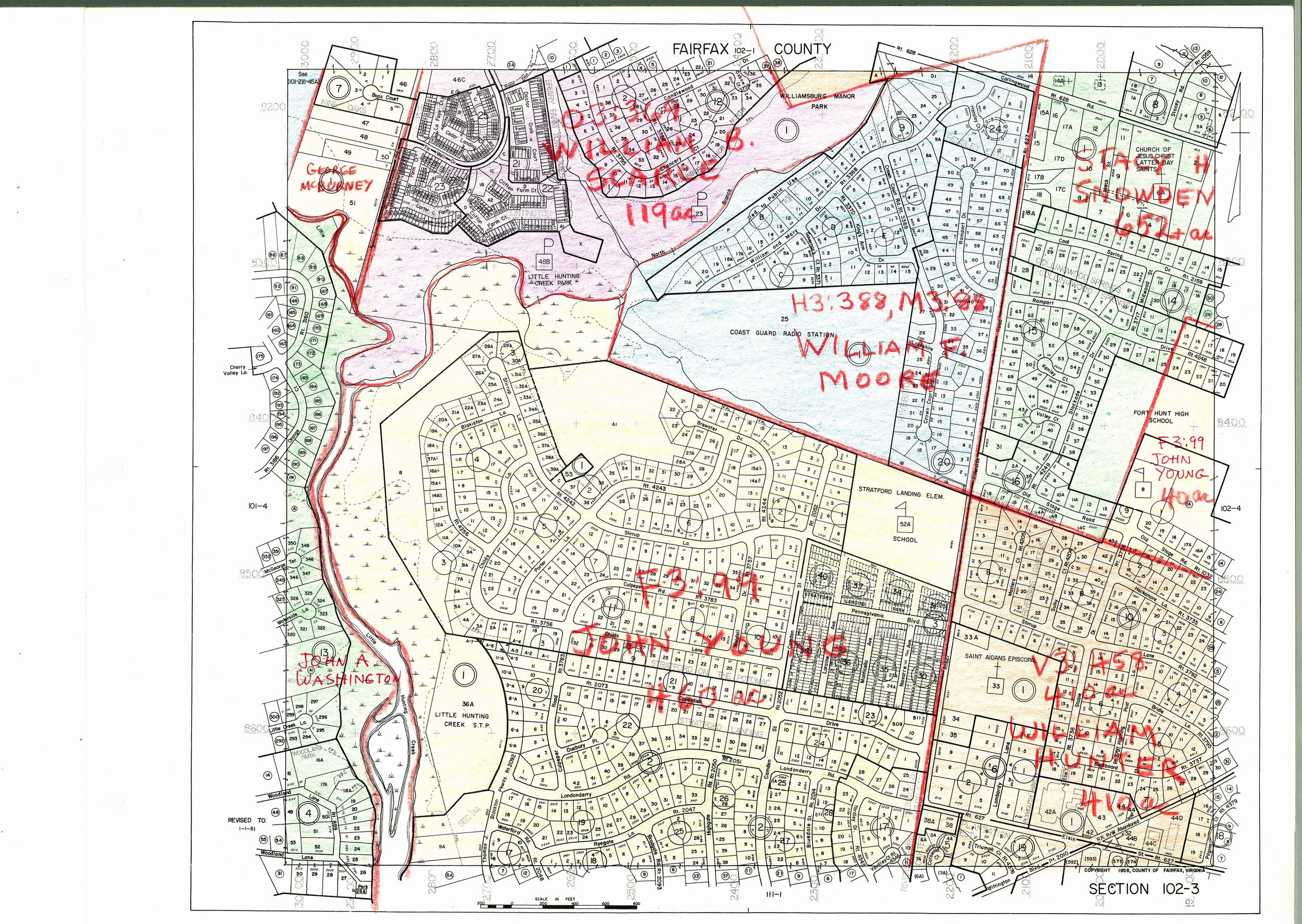Early History
An archaeological dig in 1987 at River Farm, where the American Horticultural Society is headquartered, turned up significant evidence of prehistoric habitation in our area. Just some of the finds included a white quartz, Halifax-style arrowhead at least 4,500 years old; a stone tool, classified as a knife or Savannah River-style point from around 3,000 B.C. (similar to those pictured below); and stone flakes left behind from making stone tools.
Savannah River-style points.
The area that is currently Stratford Landing was occupied by the Doeg (also called Dogue, Taux, Tauxenet) people before the arrival of the English. The Doeg probably spoke Piscataway, a dialect of Algonquin. From June 18 – July 16, 1608, Captain John Smith sailed up the Potomac past our neighborhood as far as the rapids above current-day Washington, stopping at the native Doeg villages along the way.
The first land patent - for 1800 acres, including our area - was issued to the Brent family in 1653/54. Giles Brent and his sister Margaret, Catholics originally from Maryland, were the first English settlers in Northern Virginia. Giles Brent married a Piscataway princess, so our area was first named Piscataway Neck. The patent was issued in the name of Giles Brent Jr., an infant at the time. When Giles Jr. died, the land passed on to his cousin George Brent, and then to his brother-in-law, William Clifton in 1739. Piscataway Neck then became Clifton’s Neck.
George Washington’s plan of Clifton’s Neck, 1760. https://www.loc.gov/item/99464082/
River Farm (George Washington’s Land)
In 1760, bankruptcy forced William Clifton to sell his property. George Washington purchased all 1,806 acres from Clifton for 1,210 pounds sterling. Also in 1760, Washington purchased an additional 238 acres from George Brent. Washington changed the name to River Farm. It is the northernmost of Washington’s five farms. Though Washington loved and pursued farmland, he never lived on or worked the land of River Farm. Instead, he rented it to tenant farmer Samuel Johnson who paid a portion of his tobacco crop to Washington for the privilege. In 1773/74 he gifted it to his personal secretary, Tobias Lear, as a wedding present.
George Washington’s plan of his farm on Little Hunting Creek, 1766. https://www.loc.gov/item/74693204/
George Washington’s plan of his Five Farms, 1801. https://www.loc.gov/item/99466780/
W. Gillingham’s map of George Washington’s land at Mount Vernon, 1859. https://www.loc.gov/item/2009582413/
1860 Maps
By 1860 most large tracts acquired a century earlier had been subdivided into smaller parcels. The "Fairfax County in 1860: Property Owners" maps, prepared by Beth Mitchell, depict the land parcels and respective owners in the county in 1860, just prior to the Civil War. The 1860 owners of these parcels were identified, and the property boundaries were delineated on the 1981 Real Property Identification Map of Fairfax County using colored pencil.
More information is available on the Fairfax County History Commission website.
Mount Vernon Electric Railway
The Washington, Alexandria, Mount Vernon Electric Railway line (the first streetcar line in Northern Virginia) operated from 1892-1932, connecting Washington and Alexandria to the Mount Vernon estate, with many stops along the way. It followed the route of the present-day George Washington Memorial Parkway as far as Collingwood Road where it turned away from the river, crossed Ft. Hunt Road & Elkin Street to follow present-day Wittington Boulevard where it crossed Little Hunting Creek and on to the Mount Vernon circle. In 1906 there were 30 daily trains between Washington and Mount Vernon with a total of 1,743,734 passengers for that year. The railway was discontinued when the GW Parkway was opened in 1932.
The stations’ former locations are shown on the map below, numbered in blue.
Canoers have reported fascinating remnants of this railway. If you follow the line of Wittington Blvd. across Little Hunting Creek to the bank on the other side, you can still see the embankment on which the railway was constructed. People have reported finding rusted metal railway ties and other related objects.
Trolley bridge over Little Hunting Creek, some time before 1930.
Mount Vernon Trolley Station, ca. 1915.
Stratford Landing and Nearby Neighborhoods Over Time
The aerial photographs shown below (1937 - 2021) were produced using the Fairfax County Historical Imagery Viewer. Click or tap on the small arrows on the left and right to move among different years.






Stratford Landing Development
The original development of Stratford-on-the-Potomac consisted of 69 houses built by the Edward Sweeney Company in 1954-1955. However, this company then went into bankruptcy.
Development of Stratford Landing was then taken up in 1956 by a Long Island builders Ernest C. Beck and Walter Beck. Sales were handled by The Stratford Realty Company. The newspaper article below announces the first 110 homes. Interestingly, the article claims that George Washington had built “a small community of slave dwellings and barns to serve his original river farm” and that he “made periodic trips across Little Hunting Creek on horseback through the heavily wooded land on which the Stratford Landing homes will rise”.
Washington Post and Times Herald, August 25, 1956
In 1957 more houses were completed, as well as utilities and paved roads leading in.
Washington Post and Times Herald, April 6, 1957
In April, 1957 ads began to appear in the Washington Post and Times Herald.
Washington Post and Times Herald, April 20, 1957
Evidently the houses in our area were selling like hotcakes!
Washington Post and Times Herald, April 20, 1957
Later in 1957, the builders Ernest and Walter Beck inaugurated a “floating sales office” taking prospective buyers along Little Hunting Creek.
Washington Post and Times Herald, August 17, 1957
Meanwhile, the newspaper ads continued…
Washington Post and Times Herald, August 17, 1957
Another newspaper story on Stratford Landing and a full-page ad in the same edition.
Washington Post and Times Herald, September 7, 1957
Washington Post and Times Herald, September 7, 1957
A “real attention-stealer” during the Homes of ‘57 Exhibit.
Washington Post and Times Herald, September 14, 1957
Introducing the Colonial Cape Cod design house.
Washington Post and Times Herald, February 1, 1958
Washington Post and Times Herald, June 12, 1958
The (space age?) Gramercy model appears.
Washington Post and Times Herald, March 10, 1962
Fast forward to 1994. The neighborhood matures and the residents enjoy.
Washington Post, May 29, 1994
Washington Post, May 29, 1994
As the years go by, we continue to appreciate and enjoy our neighborhood.
Washington Post, October 25, 2003
Washington Post, October 25, 2003
We have a collection of SLCA newsletters dating back to 1968 on this website which give more information and insight into our neighborhood history.


























